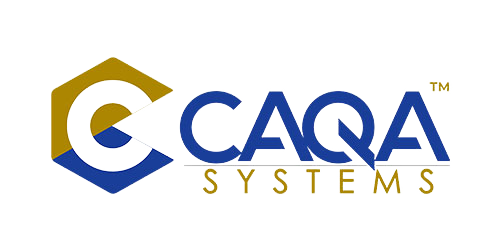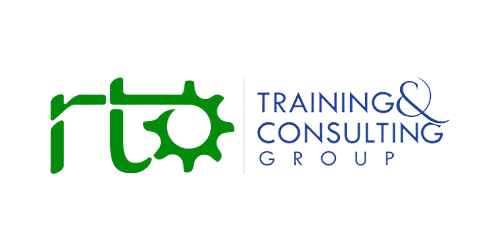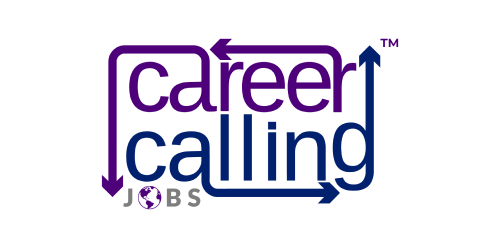In a state-of-the-art manufacturing facility on Australia's eastern seaboard, engineering students work alongside experienced technicians to solve real production challenges. This isn't a simulated classroom exercise; it's a structured industry placement where theory meets practice, and students develop capabilities directly aligned with workplace needs.
"We don't just host students because it's the right thing to do," explains the company's operations manager. "We do it because it's a strategic investment in our future workforce. The students we mentor today become the skilled employees we desperately need tomorrow."
This scene represents the beating heart of Australia's vocational education and training (VET) system, a dynamic partnership between training providers and employers that shapes the quality, relevance, and impact of vocational education. While policy discussions often focus on funding models, qualification frameworks, and delivery methods, it's employer engagement that truly determines whether VET fulfils its core mission of producing job-ready graduates aligned with industry needs.
"The relationship between training providers and employers isn't just a nice enhancement to vocational education, it's the foundation that makes everything else work," observes a workforce development specialist with decades of experience across multiple industries. "Without deep employer involvement throughout the educational process, even the best-designed qualifications and most well-resourced training facilities can't produce graduates with the capabilities today's workplaces demand."
The significance of this relationship extends far beyond individual programs or institutions to affect Australia's broader economic ecosystem. In a globally competitive environment where workforce capability increasingly determines national prosperity, the alignment between education and employment represents a strategic priority with implications reaching well beyond the education sector alone.
The Scale and Impact of Employer Engagement
The scale of employer engagement in Australia's VET sector is substantial and far-reaching. In 2023, 56.8% of Australian employers were actively engaged with VET, meaning they either hired VET graduates, hosted apprentices or trainees, or provided nationally recognised training to their staff.
This extensive participation reflects both the sector's economic importance and employers' recognition of its value. Over 4 million students participate in VET annually, fueling industries from construction to healthcare, technology, and hospitality. In 2023, the sector addressed skills shortages that topped 300,000 vacancies, highlighting its critical role in Australia's economic infrastructure.
The potential impact of enhanced alignment between VET and workplace needs is staggering. A 2021 Deloitte report estimated that improved alignment through effective employer partnership could add $45 billion to Australia's GDP by 2030 through productivity improvements, reduced skills mismatches, and faster workforce adaptation to technological change.
However, employer satisfaction with VET has shown concerning trends. While 66.4% of engaged employers reported satisfaction with all forms of VET engagement in 2023, this figure represents a decline from 72.9% in 2015. Satisfaction with apprenticeships and traineeships specifically dropped from 81.7% in 2015 to 73.2% in 2023. These declining satisfaction rates signal challenges in maintaining effective partnerships that must be addressed for the system to achieve its full potential.
Driving Relevance: Keeping Pace with Evolving Industries
One of the most crucial functions of employer engagement is ensuring training relevance amid accelerating technological and operational change across industries. The half-life of technical skills continues to shrink as digital transformation, automation, sustainability requirements, and evolving business models reshape workplace requirements faster than traditional curriculum development cycles can accommodate.
"Ten years ago, our curriculum could remain relatively stable for 3-5 years before needing significant updates," notes a construction training manager. "Today, with new materials, techniques, and technologies entering the industry constantly, we need continuous input from employers to ensure we're teaching current practices rather than approaches that are already becoming outdated."
This relevance challenge affects virtually all sectors. Construction now demands expertise in sustainable building materials, integrated digital systems, and prefabrication techniques alongside traditional trades. Healthcare increasingly incorporates telehealth delivery, electronic record systems, and advanced monitoring technologies that transform practice across all roles. Information technology requires constant updating as programming languages, cybersecurity approaches, and infrastructure models evolve at a breakneck pace.
Digital skills have shifted from specialised requirements to universal necessities, with a 2023 Jobs and Skills Australia report forecasting that 85% of jobs by 2030 will require digital capabilities across different levels of complexity. Without continuous input from those at the forefront of these changes, vocational education risks teaching outdated methods, technologies, and practices while industries race ahead.
Employers operating at the cutting edge of these developments provide invaluable insight into emerging skill requirements before they become widely documented or incorporated into formal training packages. Through mechanisms like industry advisory committees, workplace feedback on student performance, trainer industry placements, and participation in qualification reviews, employers help identify capability gaps, emerging technologies, and evolving practice standards that should be incorporated into training.
"Our industry advisory committee includes representatives from leading firms across different market segments," explains a digital technology training coordinator. "They alert us to emerging tools and practices months or even years before they appear in formal job advertisements or qualification frameworks. This early intelligence allows us to incorporate these elements into our training through specialised modules and industry projects, ensuring our graduates are prepared for current workplace requirements rather than yesterday's skills."
Beyond identifying what skills require development, employers provide essential guidance on how these capabilities manifest in contemporary workplace contexts. Understanding that installing solar panels requires not just technical knowledge but customer education skills, that telehealth delivery combines clinical capabilities with specific communication techniques, or that data analysis involves both technical tools and business context interpretation helps training providers develop more complete and applicable skill sets.
The Talent Pipeline: Strategic Workforce Development
For employers facing persistent skills shortages and recruitment challenges, engagement with vocational education creates strategic talent pipelines that address both immediate and long-term workforce needs. Australia's tight labour market cuts across multiple sectors, with a 2023 Australian Industry Group survey finding 70% of businesses reporting difficulty hiring workers with appropriate job-ready skills.
These shortages create productivity constraints, limit growth opportunities, and place significant pressure on existing staff, challenges that effective VET engagement can directly address.
"Traditional recruitment approaches were no longer meeting our needs," shares a human resources director from a manufacturing firm. "We'd spend months searching for qualified candidates, often unsuccessfully, while positions remained unfilled and production capacity suffered. Our partnership with the local TAFE has transformed this situation, creating a reliable pipeline of work-ready graduates specifically prepared for our operational requirements."
Active participation in training creates multiple workforce development advantages for employers. Most directly, hosting apprentices, trainees, or placement students provides an extended opportunity to assess potential employees in actual workplace conditions rather than relying on brief interviews or credential review. This practical assessment reveals capabilities, work ethic, cultural fit, and learning agility that formal qualifications alone cannot demonstrate.
Students who demonstrate these qualities during their learning phase become natural recruitment targets, creating efficient pathways from training to employment that bypass many traditional hiring challenges. The reduced onboarding time and faster productivity when hiring graduates already familiar with organisational approaches further enhance this benefit.
Small and medium enterprises (SMEs) often benefit particularly from these arrangements, as they typically lack the extensive human resource departments, sophisticated recruitment processes, or comprehensive internal training capabilities of larger organisations. For a small business like an independent veterinary practice, construction firm, or hospitality venue, the ability to train potential employees to their specific requirements and workflow before making hiring commitments represents a substantial competitive advantage in tight labour markets.
"As a small business, we can't compete with the salaries or benefits packages that large corporations offer," explains the owner of a specialised metal fabrication shop. "But through our apprenticeship program, we can identify talented individuals early, develop their skills specifically for our operation, and build relationships that translate into loyalty and retention despite competitive recruitment pressures."
Beyond immediate hiring advantages, sustained engagement with vocational education creates broader workforce development benefits for employers and industry sectors. Participation in qualification design and review processes allows influence over the capabilities developed across the entire graduate cohort, not just those directly engaged with specific employers. Industry leadership in identifying future skill requirements and advocating for new or updated qualifications helps ensure the training system addresses emerging workforce needs before they become critical shortages.
Enhancing Learning: Authentic Experience and Improved Outcomes
For students, employer engagement transforms educational experiences through exposure to authentic workplace contexts, challenges, and standards that classroom environments alone cannot replicate. This workplace learning, whether through formal apprenticeships, structured industry placements, or project-based industry collaborations, provides multiple dimensions of skill development that significantly enhance employment outcomes and career readiness.
The employment advantage this creates is substantial and measurable. National Centre for Vocational Education Research (NCVER) data from 2022 shows that 88% of VET graduates whose training included significant employer engagement found relevant employment within six months of completion, compared to 65% for those without such experience.
This 23 percentage point difference represents thousands of individual career opportunities stemming directly from the enhanced capabilities, workplace understanding, and industry connections that employer engagement facilitates.
"There's simply no comparison between classroom-only learning and training that includes substantial workplace components," asserts an education researcher specialising in vocational pedagogy. "Workplace learning develops procedural knowledge, situational judgment, and professional identity in ways that even the best simulation cannot duplicate. These elements prove crucial for employment success, explaining the substantial outcome differences we consistently observe."
Several factors explain this substantial advantage. Workplace learning develops procedural knowledge and muscle memory alongside conceptual understanding, creating more complete skill development than classroom instruction alone. Students learn not just what to do but how to do it efficiently, safely, and to industry quality standards under authentic conditions with real consequences.
Beyond technical skills, workplace experience develops the essential soft skills consistently prioritised in employer surveys: effective communication with colleagues and clients, teamwork under genuine pressure, problem-solving with limited resources, and adaptability to unexpected challenges. These capabilities emerge naturally from authentic workplace participation, where students must navigate real team dynamics, manage client interactions, meet actual deadlines, and respond to unplanned situations that carefully structured classroom activities cannot fully simulate.
Workplace learning also facilitates professional socialisation, the development of industry-specific behavioural norms, values, and identities that significantly influence employment success. Through observation of and feedback from experienced practitioners, students learn the unwritten rules and expectations of their chosen field: how to communicate with different stakeholders, when to take initiative versus seek guidance, how to manage challenging situations, and what constitutes professional conduct in specific contexts.
For international students, who contribute over $10 billion annually to Australia's VET sector, workplace learning through employer engagement provides particularly crucial advantages. Beyond skill development, these experiences demonstrate Australian workplace capabilities to potential employers who might otherwise hesitate to hire graduates without local work history. The references, networks, and local professional understanding developed through quality workplace learning can significantly enhance post-graduation employment prospects, potentially influencing visa and residency outcomes for those seeking to remain in Australia.
The Current Landscape: Challenges in Implementation
Despite its clear benefits, employer engagement in vocational education faces several significant challenges that limit its consistency, quality, and impact across the VET system. Understanding these barriers is essential for developing effective enhancement strategies.
Participation Barriers: Size, Sector, and Location Disparities
Employer participation in VET varies dramatically based on business size, industry sector, and geographic location, creating significant disparities in engagement levels and student opportunities. Large enterprises with dedicated training departments, established human resource functions, and longer-term workforce planning horizons typically engage more systematically than small businesses operating with limited resources and immediate operational priorities.
Geographic disparities further complicate the picture. Urban centres with dense business concentrations typically offer abundant potential partners and placement opportunities. In contrast, rural and remote areas often struggle with limited employer numbers, greater distances between businesses and training providers, and fewer resources for supporting learners. This geographic engagement gap contributes to the 12% lower VET completion rates in non-metropolitan areas documented by NCVER, as students struggle to fulfil workplace learning requirements or access employer-supported training models.
Sector variations add another dimension to engagement challenges. Some industries have well-established traditions and structures supporting vocational education, construction's apprenticeship system, healthcare's clinical placement networks, and electrical trades' licensing requirements, while others lack comparable frameworks despite similar potential benefits.
"Emerging industries and rapidly evolving fields often face particular challenges establishing systematic engagement approaches without historical models to build upon," explains an industry engagement specialist. "Ironically, these are precisely the fields that might benefit most from strong education-employment connections, as their rapid evolution means classroom-only training risks becoming quickly outdated."
Quality Inconsistency: From Excellence to Exploitation
Quality variations represent another significant challenge, with substantial differences in the depth, structure, and educational value of employer engagement across the VET landscape. At their best, employer-supported learning experiences feature clear learning objectives, structured skill development progressions, qualified workplace supervision, regular feedback mechanisms, and meaningful assessment of capabilities in authentic contexts.
However, less effective models remain common, including unstructured exposure without clear learning progression, minimal supervision or guidance, tasks unrelated to qualification requirements, or exploitative arrangements that use students as free labour without corresponding educational benefit. The Australian Skills Quality Authority's 2023 audits identified concerning quality issues in approximately 20% of RTOs regarding their employer engagement and workplace learning arrangements.
"The quality gap in employer engagement is arguably even more concerning than participation barriers," states a VET quality specialist. "Poor quality workplace experiences don't just fail to deliver intended benefits, they can actually create negative outcomes by teaching inappropriate practices, damaging student confidence, or failing to develop essential capabilities that employers expect from graduates."
Several factors contribute to these quality variations. Provider capability differs significantly, with some institutions possessing specialised staff, robust quality assurance processes, and systematic support mechanisms for both employers and students engaged in workplace learning. Others, particularly smaller private RTOs with limited resources, may lack this specialised expertise or support infrastructure, resulting in less structured and supported arrangements.
Employer capacity for supporting learning similarly varies. While some organisations have established systems for hosting learners, with trained workplace supervisors, structured learning activities, and regular feedback processes, others may provide limited guidance or inappropriate responsibilities despite good intentions. Without consistent expectations, training requirements, or support resources for workplace supervisors, student experiences depend heavily on individual workplace cultures and supervisor capabilities rather than systematic quality assurance.
Resource Constraints: The Implementation Gap
Resource limitations significantly constrain employer engagement implementation across the VET sector despite its recognised importance. The Productivity Commission has documented a decade-long decline in VET funding in real terms, creating particular challenges for resource-intensive activities like building and maintaining effective employer partnerships.
For training providers, resource limitations manifest as insufficient dedicated staffing for employer relationship management, inadequate support for workplace supervisors, limited capacity for quality assurance of off-site learning, and constrained ability to develop innovative engagement models. Many institutions rely on teaching staff to manage employer relationships alongside their instructional responsibilities, creating workload pressures that compromise both teaching quality and partnership development.
Employers, particularly SMEs, face their own resource challenges in supporting vocational education. Supervision time represents a significant investment that may reduce short-term productivity, especially for organisations with limited staff capacity. Administrative requirements related to training plans, assessment documentation, and compliance reporting create additional workload that many small businesses struggle to accommodate alongside operational demands.
"As a small business owner, I believe in supporting the next generation of workers, but the practical realities create real barriers," explains the manager of a regional hospitality venue. "Taking time away from service to mentor students, complete paperwork, and manage assessment requirements is a genuine cost we absorb. Without financial support or recognition, many employers simply can't justify the investment despite seeing its long-term value."
The system infrastructure supporting employer engagement also suffers from resource constraints. Digital platforms for matching students with appropriate opportunities, quality assurance systems for monitoring workplace learning experiences, professional development for staff managing industry partnerships, and research into effective engagement models all require investment currently lacking in many parts of the sector.
Strategic Enhancement: Building World-Class Engagement
Addressing these challenges and maximising the potential of employer engagement requires systematic action across multiple dimensions. Several strategic approaches offer particular promise for enhancing implementation and outcomes.
Scaling Partnerships: Structures for Sustainable Engagement
Expanding quality employer engagement requires scalable partnership models that accommodate different organisational capacities, geographic contexts, and industry requirements:
Regional collaboration networks bring together multiple employers, education providers, and support organisations to create sustainable engagement ecosystems in specific geographic areas. These networks might include formal agreements for sharing placement responsibilities, coordinated approaches to apprenticeship rotation, joint investment in training facilities or equipment, and collaborative advocacy for policy and funding support.
By distributing responsibilities and combining resources, these arrangements make participation viable for organisations that could not independently support comprehensive training engagement, particularly in regional and rural areas with limited individual capacity.
Industry-led training models position employers or industry organisations as primary coordinators of vocational education rather than placing full responsibility on training providers. Group training organisations employing apprentices who rotate between host employers, industry association training centres providing specialised technical instruction, and sector skills councils coordinating qualification development all represent variations of this approach.
These models leverage industry expertise and networks while creating economies of scale that enhance both participation levels and learning quality. A successful example comes from the hospitality industry, where a regional industry association coordinates placements across multiple venues, providing consistent supervision, training, quality assurance, and administrative support that individual businesses could not sustain independently.
Intermediary organisations provide specialised services supporting employer engagement in vocational education, particularly for SMEs without internal capacity for managing training relationships. These intermediaries might handle administrative requirements, coordinate student placements across multiple businesses, provide mentor training and support, or manage quality assurance processes.
By reducing implementation barriers while maintaining educational integrity, these organisations can significantly expand engagement beyond large enterprises with dedicated training functions. A digital platform connecting small technology firms with IT students for project-based learning, for example, handles matching, documentation, and quality monitoring while allowing businesses to focus solely on the learning relationship.
Quality Frameworks: Standards, Support, and Development
Improving engagement quality requires comprehensive frameworks that establish clear expectations while building capability across the VET system:
National workplace learning standards should define quality requirements for different engagement models, specifying elements like minimum workplace exposure duration, supervision qualifications and responsibilities, learning activity progression, assessment approaches, and documentation requirements. These standards should balance sufficient specificity for consistent implementation with appropriate flexibility for different industry contexts and business sizes.
An exemplary approach comes from the healthcare sector, where clinical placement quality frameworks specify supervisor qualifications, student-to-supervisor ratios, required learning activities, assessment approaches, and quality verification processes. Similar frameworks are now emerging in other sectors, creating clearer expectations while allowing contextual adaptation.
Workplace supervisor development programs should address the specific knowledge and skills required for effective learning facilitation in work settings. These programs should cover learning design principles, feedback techniques, assessment approaches, and support strategies for diverse learners.
"We developed a micro-credential for workplace supervisors that covers learning facilitation, effective feedback, and assessment approaches," shares a professional development coordinator. Completing this program not only improves supervision quality but also provides formal recognition that employers value. Over 2,000 supervisors have completed the program in its first year, creating a growing network of qualified workplace educators across multiple industries.
Provider capability building should strengthen the specialised expertise required for managing quality employer engagement. Professional development for staff responsible for industry partnerships should address relationship management, quality assurance processes, support systems for both employers and students, and integration of workplace experiences with broader learning programs.
Communities of practice connecting engagement coordinators across institutions can facilitate knowledge sharing and collaborative problem-solving beyond what individual providers might achieve independently. A national online platform now connects hundreds of industry engagement specialists across Australia, supporting resource sharing, problem-solving discussions, and collaborative development of innovative approaches.
Sustainable Funding: Investment for Returns
Sustainable funding models are essential for supporting quality employer engagement at scale, recognising both their implementation costs and substantial economic returns:
Provider funding mechanisms should explicitly recognise employer engagement coordination costs rather than treating workplace components as cost-neutral or expecting them to be absorbed within general operations. Funding formulas should consider factors like industry complexity, geographic dispersion, engagement depth, and student support needs that affect coordination requirements across different contexts.
Performance-based components might reward successful outcomes like completion rates, employment results, and employer satisfaction while maintaining base funding for essential relationship-building activities. Several state jurisdictions are experimenting with industry engagement-specific funding components that acknowledge these additional costs while incentivising quality outcomes.
Employer incentives should acknowledge and partially offset the real costs of providing quality learning opportunities. These might include direct subsidies for supervision time, tax incentives for participating businesses, wage support for apprentices and trainees, or funding for workplace facilities and equipment used in training.
Incentives should be designed to reward quality rather than simply participation volume, with tiered approaches providing greater support for comprehensive, well-structured learning experiences than for minimal workplace exposure. A construction industry initiative provides training allowances to site supervisors based on documented mentoring time and student progress, creating direct financial recognition for quality supervision.
Shared investment models should establish joint responsibility for workforce development costs through approaches like training levies within specific sectors, co-funding arrangements between government and industry bodies, or collaborative structures where multiple employers contribute to shared training infrastructure.
These arrangements recognise the broader economic benefits of skilled workforce development beyond individual employers, creating sustainable funding approaches less vulnerable to government budget fluctuations or individual company decisions. A successful example comes from the mining sector, where an industry-funded training foundation provides substantial support for vocational education programs, developing talent pipelines for the entire industry rather than individual companies.
The Imperative for Collaborative Action
Employer engagement represents not simply a beneficial enhancement to vocational education but a fundamental requirement for fulfilling its core purpose of developing work-ready graduates aligned with industry needs as Australia navigates complex workforce challenges, critical skills shortages, technological transformation, global competition, the capability to develop job-ready graduates efficiently and effectively becomes increasingly crucial for both economic prosperity and individual opportunity.
"We need to recognise that employer engagement in VET isn't just about educational quality, it's about economic security and national competitiveness," emphasises a workforce policy specialist. "In a global economy where skilled talent is perhaps the most critical resource, our ability to effectively develop workforce capabilities through education-employer partnerships may determine whether Australia thrives or struggles in the coming decades."
The stakes of getting this engagement right extend far beyond educational effectiveness to encompass broader national priorities. For individual learners, quality engagement can mean the difference between sustainable employment and precarious work, between career advancement and stagnation, between thriving and merely surviving in a rapidly changing labour market. For employers, it represents the difference between having access to skilled workers who can drive innovation and productivity versus facing persistent capability gaps that limit growth and competitiveness.
While challenges persist in participation, quality, resources, and coordination, proven approaches exist for addressing each of these dimensions. By implementing scalable partnership models, establishing clear quality frameworks, developing sustainable funding mechanisms, and creating coordinated governance structures, Australia can build a world-leading system of employer engagement in vocational education that maximises both individual opportunity and economic benefit.
Back at that manufacturing facility, the operations manager watches as students tackle a complex production challenge. "These students aren't just learning technical skills, they're becoming part of our industry," she reflects. "That transformation doesn't happen in classrooms alone. It happens through meaningful connections between education and employment, where workplace realities shape learning priorities and educational expertise shapes workforce development."
Her observation captures the essence of effective employer engagement in vocational education, a partnership where industry needs drive training priorities and educational expertise shapes talent development, creating mutual benefits that extend far beyond either sector alone. By strengthening this critical alliance between education and employment, Australia can create a VET system that truly delivers on its promise of developing job-ready graduates who meet both current needs and future possibilities in an evolving employment landscape.


































